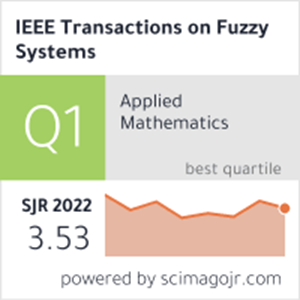FCAformer:用于弱监督组织病理学图像分割的基于模糊增强类别感知注意力的转换器
IF 11.9
1区 计算机科学
Q1 COMPUTER SCIENCE, ARTIFICIAL INTELLIGENCE
引用次数: 0
摘要
像素级组织病理学图像分割在计算病理学中起着至关重要的作用,仅依赖于图像级标签的弱监督分割方法显示出巨大的潜力。然而,现有的大多数弱监督分割方法受到卷积神经网络固定接受野的限制,忽略了不同组织类型分布的不确定性和类边界的模糊性,导致分割效果有限。为了解决这些问题,我们提出了一种基于模糊增强的类别感知注意力转换器(FCAformer),用于弱监督的组织病理学图像分割。FCAformer采用Transformer架构对全局上下文信息进行建模,有效缓解了传统方法中固定接受野对注意图大小的限制。随后,FCAformer结合模糊系统对组织病理图像中的不确定性进行建模。具体来说,该算法为Transformer编码器最后一层的输出特征映射赋值隶属函数,生成模糊隶属矩阵,结合三条模糊规则提取模糊特征,最后将这些特征融合生成模糊注意图。该注意图引导网络学习不同组织类型的特征,提高类边界的模糊性,从而提高模型对不确定组织分布和模糊区域的建模能力。此外,基于对比学习的思想,我们设计了对比类令牌(CCT)损失,进一步增强了不同类标签之间的可分辨性。在LUAD-HistoSeg和BCSS-WSSS数据集上的大量实验表明,FCAformer在弱监督分割任务中取得了最先进的分割性能。本文章由计算机程序翻译,如有差异,请以英文原文为准。
FCAformer: Fuzzy-Enhanced Class-Aware Attention Based Transformer for Weakly Supervised Histopathology Image Segmentation
Pixel-level histopathology image segmentation plays a vital role in computational pathology, and weakly supervised segmentation methods, which rely solely on image-level labels, have shown great potential. However, most existing weakly supervised segmentation methods are limited by the fixed receptive field of convolutional neural networks, and overlook the uncertainty of the distribution of different tissue types and the fuzziness of class boundaries, resulting in limited segmentation effects. To address these problems, we propose a fuzzy-enhanced class-aware attention based Transformer (FCAformer) for weakly supervised histopathology image segmentation. FCAformer employs the Transformer architecture for model global contextual information, which effectively alleviates the limitation of fixed receptive field on the size of attention map in traditional methods. Subsequently, FCAformer integrates fuzzy system to model the uncertainty in histopathology images. Specifically, it assigns membership function to the output feature map of the last layer of Transformer encoder, generates fuzzy membership matrix, extracts fuzzy features by combining three fuzzy rules, and finally fuses these features to generate fuzzy attention map. This attention map guides the network to learn the characteristics of different tissue types and improve the fuzziness of class boundaries, thereby improving the modeling ability of the model on uncertain tissue distribution and fuzzy areas. In addition, based on the idea of contrastive learning, we design contrastive class token (CCT) loss to further enhance the distinguishability between different class labels. Extensive experiments on LUAD-HistoSeg and BCSS-WSSS datasets demonstrate that FCAformer achieves state-of-the-art segmentation performance in weakly supervised segmentation tasks.
求助全文
通过发布文献求助,成功后即可免费获取论文全文。
去求助
来源期刊

IEEE Transactions on Fuzzy Systems
工程技术-工程:电子与电气
CiteScore
20.50
自引率
13.40%
发文量
517
审稿时长
3.0 months
期刊介绍:
The IEEE Transactions on Fuzzy Systems is a scholarly journal that focuses on the theory, design, and application of fuzzy systems. It aims to publish high-quality technical papers that contribute significant technical knowledge and exploratory developments in the field of fuzzy systems. The journal particularly emphasizes engineering systems and scientific applications. In addition to research articles, the Transactions also includes a letters section featuring current information, comments, and rebuttals related to published papers.
 求助内容:
求助内容: 应助结果提醒方式:
应助结果提醒方式:


